 W
WGeorge Allan (1736–1800) was an English antiquary and attorney at Darlington.
 W
WJames Williams Arrowsmith was a printer and publisher in Bristol, of the firm Arrowsmith, which he incorporated as a private company, J. W. Arrowsmith Ltd, in 1911.
 W
WCharles Robert Ashbee was a British architect and designer who was a prime mover of the Arts and Crafts movement that took its craft ethic from the works of John Ruskin and its co-operative structure from the socialism of William Morris.
 W
WChristopher Barker (c.1529–1599) was the printer to Queen Elizabeth I. He was also the father of a printing dynasty that included his son Robert Barker, his grandsons Robert Constable and Francis Constable, and Richard Constable who is believed to be his grandson. He is most well-known for printing many editions of English Bibles during the Elizabethan Age, notably the Geneva Bible and the so-called Bishop's Bible. He was the official printer of the court of Elizabeth I of England and held exclusive patents to print Bibles.
 W
WJohn Baskerville was an English businessman, in areas including japanning and papier-mâché, but he is best remembered as a printer and type designer.
 W
WGeorge Baxter (1804–1867) was an English artist and printer based in London. He is credited with the invention of commercially viable colour printing.
 W
WRichard Bentley was a 19th-century English publisher born into a publishing family. He started a firm with his brother in 1819. Ten years later, he went into partnership with the publisher Henry Colburn. Although the business was often successful, publishing the famous "Standard Novels" series, they ended their partnership in acrimony three years later. Bentley continued alone profitably in the 1830s and early 1840s, establishing the well-known periodical Bentley's Miscellany. However, the periodical went into decline after its editor, Charles Dickens, left. Bentley's business started to falter after 1843 and he sold many of his copyrights. Only 15 years later did it begin to recover.
 W
WThomas Berthelet was a London printer, probably from France. His surname was also variously spelt Berthelot and Berthelett. Berthelet was to become King's Printer and King's Bookbinder for Henry VIII. His name was Englished as "Bartlett".
 W
WRobert Birchall was an English music seller, publisher, and instrument dealer.
 W
WWilliam Blades, English printer and bibliographer, was born at Clapham, London.
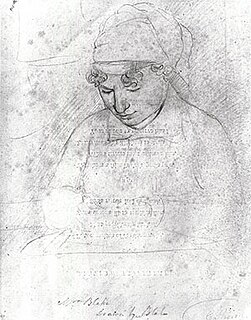 W
WCatherine Blake was the wife of the poet, painter and engraver William Blake, and a vital presence and assistant throughout his life.
 W
WWilliam Bowyer the elder, English printer, was apprenticed to a Miles Flesher in 1679, made a liveryman of The Stationers' and Newspaper Makers' Company in 1700, and nominated as one of the twenty printers allowed by the Star Chamber.
 W
WWilliam Bowyer was an English printer.
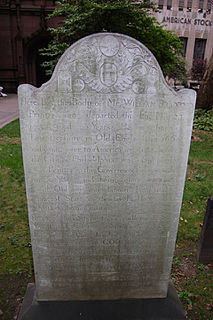 W
WWilliam Bradford was an early English printer in North America. He is best known as "the pioneer printer of the Middle colonies" and the head of a family that included publishers for 140 years. He was also known for controversies regarding freedom of the press.
 W
WGeorge Bradshaw was an English cartographer, printer and publisher. He developed Bradshaw's Guide, a widely sold series of combined railway guides and timetables.
 W
WAndrew Brice (1690–1773) was an English printer and writer.
 W
WWilliam Bulmer (1757–1830) was an English printer and typographer.
 W
WWilliam Caxton was an English merchant, diplomat, and writer. He is thought to be the first person to introduce a printing press into England, in 1476, and as a printer was the first English retailer of printed books.
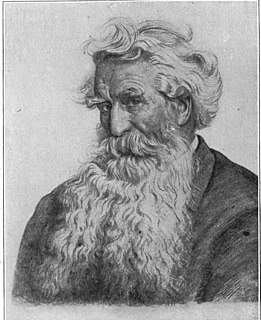 W
WThomas Combe (1796–1872) was an English printer, publisher and patron of the arts. He was 'Printer to the University' at Oxford University Press, and was also a founder and benefactor of St Barnabas Church, near the Press in Jericho and close to Oxford Canal.
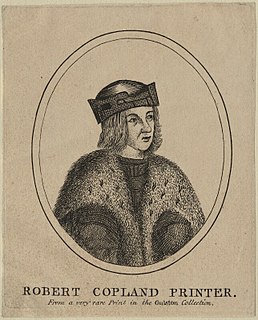 W
WRobert Copland, English printer and author, is said to have been a servant of William Caxton, and certainly worked for Wynkyn de Worde. The first book to which his name is affixed as a printer is The Boke of Justices of Peace (1515), at the sign of the Rose Garland, in Fleet Street, London. Anthony à Wood supposed, on the ground that he was more educated than was usual in his trade, that he had been a poor scholar of Oxford.
 W
WEdmund Dangerfield was an English printer and magazine publisher who specialised in cycling and motor transport. These included Cycling launched in 1891, Commercial Motor launched in 1905.
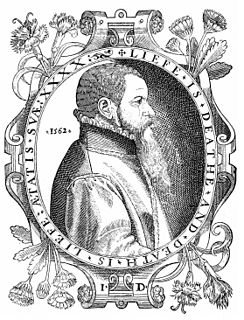 W
WJohn Day was an English Protestant printer. He specialised in printing and distributing Protestant literature and pamphlets, and produced many small-format religious books, such as ABCs, sermons, and translations of psalms. He found fame, however, as the publisher of John Foxe's Actes and Monuments, also known as the Book of Martyrs, the largest and most technologically accomplished book printed in sixteenth-century England.
 W
WDean & Son was a 19th-century London publishing firm, best known for making and mass-producing moveable children's books and toy books, established around 1800. Thomas Dean founded the firm, probably in the late 1790s, bringing to it innovative lithographic printing processes. By the time his son George became a partner in 1847, the firm was the preeminent publisher of novelty children's books in London. The firm was first located on Threadneedle Street early in the century; it moved to Ludgate Hill in the middle of the century, and then to Fleet Street from 1871 to 1890. In the mid-20th century the firm published books by Enid Blyton and children's classics in the Dean's Classics series.
 W
WGeorge Rowland Blades, 1st Baron Ebbisham, GBE was an English Conservative politician, printer, and Lord Mayor of London.
 W
WEdmund Evans was an English wood-engraver and colour printer during the Victorian era. Evans specialized in full-colour printing, which, in part because of his work, became popular in the mid-19th century. He employed and collaborated with illustrators such as Walter Crane, Randolph Caldecott, Kate Greenaway and Richard Doyle to produce what are now considered to be classic children's books. Although little is known about his life, he wrote a short autobiography before his death in 1905 in which he described his life as a printer in Victorian London.
 W
WEmily Faithfull was an English women's rights activist, and publisher.
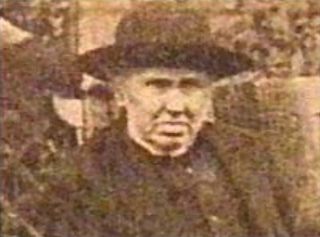 W
WBenjamin Fawcett was one of the finest of English nineteenth century woodblock colour printers.
 W
WRichard Field (1561–1624) was a printer and publisher in Elizabethan London, best known for his close association with the poems of William Shakespeare, with whom he grew up in Stratford-upon-Avon.
 W
WDanny Flynn, is a D&AD award-winning designer and printer, specialising in limited edition book design and illustration, and letterpress and screen-printing. His work in design, typography and printing led to him working in post-production design for the opening title sequence of the Hollywood film Gladiator.
 W
WRichard Grafton was King's Printer under Henry VIII and Edward VI. He was a member of the Grocers' Company and MP for Coventry elected 1562-63.
 W
WThomas Curson Hansard was an English pressman, son of the printer Luke Hansard.
 W
WJohn Harris (1756–1846) published children's books in England from the end of the 18th century to the mid-19th century, creating innovative and popular new styles. Apprenticed to Thomas Evans he found employment for a short time with John Murray before joining John Newbery's publishing firm.
 W
WAnthony Haswell was an English immigrant to New England, where he became a newspaper, almanac, and book publisher, the Postmaster General of Vermont and one of the Jeffersonian printers imprisoned under the Sedition Act of 1798.
 W
WHazell, Watson and Viney was an English printing and publishing firm with works in Aylesbury and operating from 1839 to c. 1991.
 W
WAustin Holyoake was a printer, publisher, and freethinker. The younger brother and partner of the more widely known George Jacob Holyoake, Austin Holyoake was himself a significant figure in nineteenth century secularism.
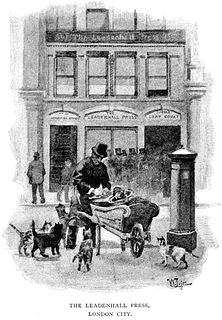 W
WThe Leadenhall Press was founded by Andrew White Tuer (1838–1900) as the publishing division of the London partnership of Field & Tuer, following a move to 50 Leadenhall Street in 1868. The firm began as job printers, stationers, and manufacturers in 1862, when Tuer joined with Abraham Field (1830–1891), an established producer of registers and log books. Among their early successes was the invention by Tuer of Stickphast Paste, a clean, vegetable-based product that quickly became the standard office paste.
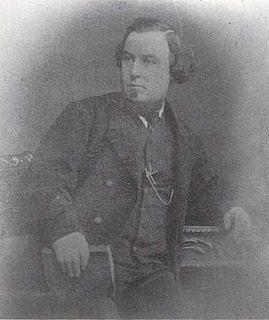 W
WJohn Bedford Leno was a Chartist, radical, poet, and printer who acted as a "bridge" between Chartism and early Labour movements, as well as between the working and ruling classes. He campaigned to give the vote to all common men and women, driven by a strong desire for "justice and freedom for all mankind". He was a leading figure in the Reform League, which campaigned for the Reform Act 1867. He was called the "Burns of Labour" and "the poet of the poor" for his political songs and poems, which were sold widely in penny publications, and recited and sung by workers in Britain, Europe and America. He was an entertaining and persuasive orator and his speeches were in great demand around London. He owned, edited and contributed to Radical and Liberal newspapers and journals, and printed and distributed bills advertising London Reform meetings and demonstrations. He wrote the international hit 'The Song of the Spade'.
 W
WWilliam Leybourn (1626—1716) was an English mathematician and land surveyor, author, printer and bookseller.
 W
WPhilip Luckombe was an English printer and author.
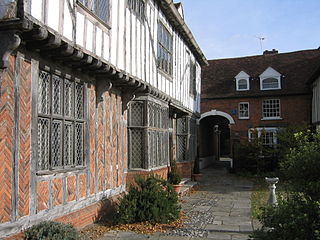 W
WBernard Mason OBE was a prominent Colchester businessman and philanthropist who was born in Ipswich but lived his whole life in Colchester. He was the proprietor of Mason's printing firm from which he retired as director in 1962.
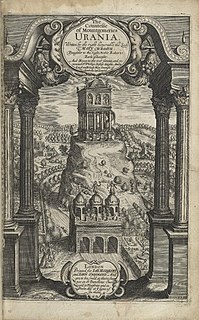 W
WAugustine Matthews was a printer in London in the Jacobean and Caroline eras. Among a wide variety of other work, Matthews printed notable texts in English Renaissance drama.
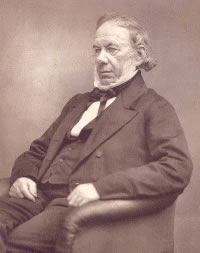 W
WJohn Mercer was an English dye and fabric chemist and fabric printer born in Great Harwood, Lancashire. In 1844 he developed a process for treating cotton, mercerisation, that improves many of its qualities for use in fabrics.
 W
WWilliam Morris was a British textile designer, poet, novelist, translator, and socialist activist associated with the British Arts and Crafts Movement. He was a major contributor to the revival of traditional British textile arts and methods of production. His literary contributions helped to establish the modern fantasy genre, while he helped win acceptance of socialism in fin de siècle Great Britain.
 W
WJohn Nichols was an English printer, author and antiquary. He is remembered as an influential editor of the Gentleman's Magazine for nearly 40 years; author of a monumental county history of Leicestershire; author of two compendia of biographical material relating to his literary contemporaries; and as one of the agents behind the first complete publication of Domesday Book in 1783.
 W
WJohn Gough Nichols (1806–1873) was an English printer and antiquary, the third generation in a family publishing business with strong connection to learned antiquarianism.
 W
WThomas Purfoot is the imprint of an English bookselling and printing business based in London. The business was successively owned by Thomas Purfoot Senior and Thomas Purfoot Junior.
 W
WRichard Pynson was one of the first printers of English books. Born in Normandy he moved to London, where he became one of the leading printers of the generation following William Caxton. His books were printed to a high standard of craftsmanship, and his Morton Missal (1500) is regarded as among the finest books printed in England in the period.
 W
WSamuel Richardson was an English writer and printer best known for three epistolary novels: Pamela; or, Virtue Rewarded (1740), Clarissa: Or the History of a Young Lady (1748) and The History of Sir Charles Grandison (1753). He printed almost 500 works during his life, including journals and magazines, working periodically with the London bookseller Andrew Millar. Richardson had been apprenticed to a printer, whose daughter he eventually married. He lost her along with five sons, but remarried and had four daughters who reached adulthood, but no male heirs to continue the print shop. As it ran down, he wrote his first novel at the age of 51 and immediately joined the popular, admired writers of his day. Leading figures he knew included Samuel Johnson and Sarah Fielding, and the eminent physician and Behmenist George Cheyne and the theologian and writer William Law, whose books he printed. At Law's request, Richardson printed some poems by John Byrom. In the literary world he rivalled Henry Fielding, and the two responded to each other's literary styles.
 W
WCharles de Sousy Ricketts was a British artist, illustrator, author and printer, known for his work as a book designer and typographer and for his costume and scenery designs for plays and operas.
 W
WThomas Snodham was an English printer. He was a specialist music printer, but music accounted for as little as 10 per cent of the books he printed. His other output included plays.
 W
WPeter Perring Thoms was an English printer and Chinese language translator based in Canton (Guangzhou) and Macau, China.
 W
WAndrew White Tuer (1838–1900) was a British publisher, writer and printer.
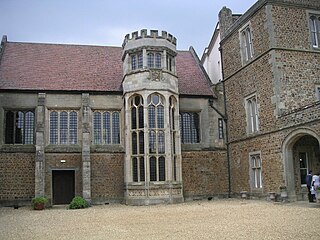 W
WRobert Waldegrave or Walgrave, the son of Richard Waldegrave of Blockley, Worcestershire, was a 16th-century printer and publisher in England and Scotland. From 1578 to 1588 he printed numerous, mainly religious works in London, and from 1590 to 1603, more than 100 books in Scotland. In 1603, following King James I of England's accession to the English throne, he returned to England, but died later the same year.
 W
WSir Emery Walker was an English engraver, photographer and printer. Walker took an active role in many organisations that were at the heart of the Arts and Crafts movement, including the Art Workers Guild, the Society for the Protection of Ancient Buildings, and the Arts and Crafts Exhibition Society.
 W
WJohn Wilkes was an English printer, bookseller and stationer.
 W
WJohn Windet was an English printer, notable for his music publications. He was a close business associate of fellow printer John Wolfe. After 1591, Wolfe ceased printing the lucrative metrical psalter of Thomas Sternhold and John Hopkins, and Windet succeeded him in becoming the sole printer of the work for patent-holder Richard Day. At some point, Windet succeeded Wolfe as London's City Printer. Wolfe passed on some of his printing ornaments to Windet after he decided to stop printing and focus solely on publishing in 1594. On Wolfe's death in 1601, Windet was appointed administrator of his estate.
 W
WWynkyn de Worde was a printer and publisher in London known for his work with William Caxton, and is recognised as the first to popularise the products of the printing press in England.